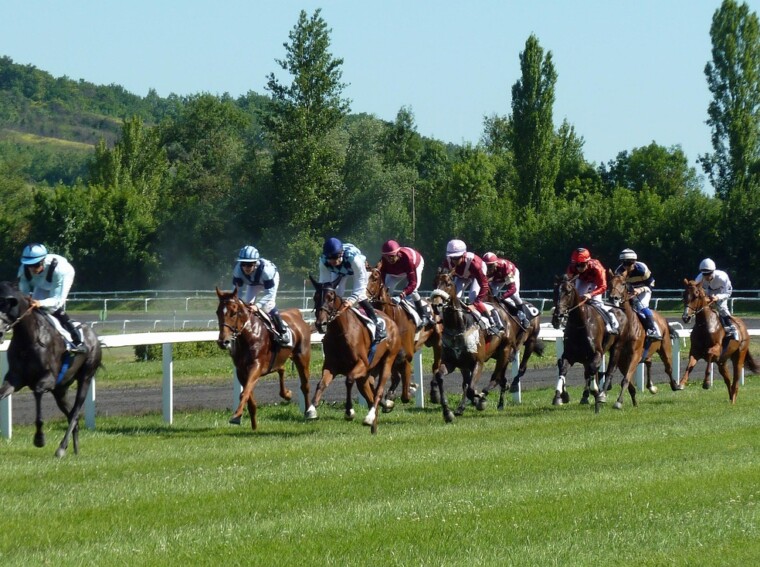Monmouth Park, a historic and prominent thoroughbred racetrack located in Oceanport, New Jersey, is a cornerstone of the East Coast horse racing circuit. Its season is a highlight of the summer, culminating in the prestigious Haskell Stakes. For those interested in the sport from a betting perspective, understanding the nuances of the track, the performance of key horses, and the strategies for wagering is crucial for success. This analysis provides a look back at the 2025 Monmouth Park meet, offering insights that can be applied to future seasons.
The Importance of Key Horses in Monmouth Park
In horse racing, certain horses distinguish themselves as “key horses” due to their consistent performance, particularly in major races. In the 2025 Monmouth Park meet, the spotlight was on the Grade 1 Haskell Stakes. The headline race saw a dramatic finish with the horse Journalism once again proving his dominance over his rival, Gosger.
Journalism won the Haskell by a half-length, repeating his winning margin from the Preakness Stakes. This victory earned Journalism an automatic entry into the Breeders’ Cup Classic, highlighting his status as a top-tier performer of the year and an essential mention in the Monmouth Park picks today.
The leading jockey of the 2025 meet was Paco Lopez, who secured his 11th riding title, his seventh in a row, with an impressive 76 wins. Trainer Claudio Gonzalez also continued his dominant run, winning his fourth consecutive training title with 34 victories. Their consistent success with a variety of horses makes them key figures to watch in any race at Monmouth Park.
Evaluating Matchups
Evaluating individual matchups is a fundamental skill for any serious horse racing enthusiast. It involves more than just looking at the final race results; you must consider factors like running style, track conditions, and the form of the jockey and trainer.
The 2025 Haskell Stakes provides a perfect case study for a key matchup. The race was a rematch between Journalism and Gosger. While Gosger took the early lead, the analysis of their previous encounter suggested that Journalism had a powerful closing kick, and his jockey, Umberto Rispoli, was able to use the outside position to his advantage to secure the victory. This demonstrates that a horse’s ability to overcome a rival’s running style and a jockey’s strategic decisions are critical factors in evaluating a matchup.
Understanding Betting Odds
Betting odds in horse racing reflect the amount of money wagered on each horse. A horse with lower odds is a favorite, meaning more money has been bet on it, while a horse with higher odds is a long shot. The odds change constantly as more money is placed. Understanding the relationship between betting odds and a horse’s real-world chances requires you to combine your own analysis with the public’s perception.
The 2025 Haskell Stakes saw Journalism, a heavy favorite, come through to win, demonstrating that sometimes the crowd’s wisdom is correct. However, in other races, longshots can and do surprise, as seen in the race where Dumb Money, with odds of 20.40, won a race on September 7, 2025. This shows that while odds are a guide, they are not a guarantee. Successful betting involves finding value—betting on a horse whose odds are higher than its true probability of winning.
Betting Strategies for Monmouth Park
Developing a successful betting strategy at Monmouth Park requires a combination of fundamental wagering principles and track-specific knowledge. Understanding how certain conditions and trends affect results can give bettors a significant edge.
A key trend from previous seasons that carried into 2025 was the success of horses that stalk the pace, winning 39% of dirt sprints. This pattern suggests that horses positioned just behind the leaders, rather than those who take the early lead, often have the best chance of finishing strong. For bettors, this means identifying horses with tactical speed—those capable of staying close without expending all their energy early—can be a profitable approach when looking at Monmouth’s dirt races.
On the turf, the dynamics were more balanced. A close look at turf races showed that post positions had a fairly even success rate, with inside, middle, and outside draws all producing competitive results. This indicates that bettors should place more emphasis on a horse’s running style, jockey skill, and recent form rather than overvaluing the gate position alone. Because turf races at Monmouth can be tightly contested, studying finishing speed and a horse’s ability to handle pace pressure is often more revealing than focusing on post bias.
Another critical aspect of long-term betting success is avoiding common pitfalls. One of the biggest mistakes new bettors make is “chasing” losses, where they increase their wager size in an attempt to quickly recover previous losses. This strategy usually leads to greater financial risk and poor decision-making. Similarly, betting based on superficial factors like a horse’s name, color, or popularity among fans often results in inconsistent results.
Final Words
The 2025 Monmouth Park season offered an exciting mix of dominant performances, record-breaking days, and thrilling finishes. The Haskell Stakes was a memorable moment in the sport, solidifying Journalism’s place among the year’s top horses. By focusing on key horses like Journalism, evaluating specific matchups, and understanding how betting odds work in tandem with strategic trends, a horse racing fan can elevate their enjoyment of the sport.

